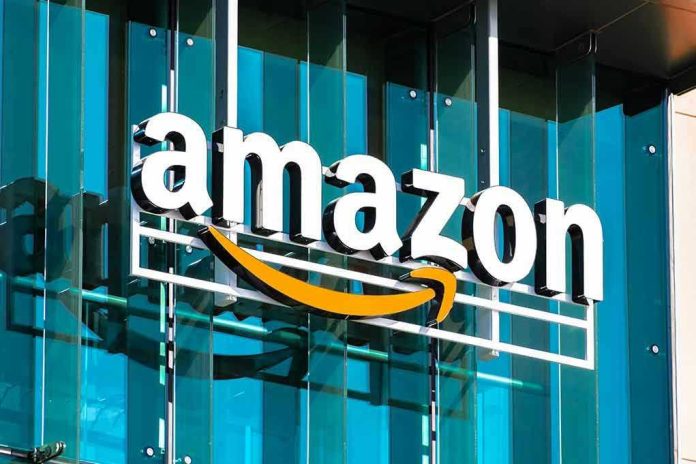
Yet again, Americans are getting hammered not just at the checkout line but in their inbox, as Amazon customers now face a new breed of scam emails designed to swipe their data during the year’s biggest online shopping frenzy—and the so-called experts and Big Tech overlords expect us to just sit back and take it.
At a Glance
- Amazon warns customers about a surge in fake Prime subscription renewal emails during Prime Day sales.
- Scammers use sophisticated phishing emails to steal login credentials and financial information.
- Amazon has taken down more than 55,000 phishing websites and 12,000 phone numbers linked to these scams.
- Cybersecurity experts urge consumers to avoid clicking suspicious links and only check accounts through official Amazon channels.
Amazon Prime Day: A Prime Opportunity for Scammers, Not Shoppers
The annual Amazon Prime Day extravaganza—a supposed celebration of deals—now doubles as open season for cyber crooks. As Americans try to stretch every last dollar, crafty scammers exploit the chaos, flooding inboxes with fake Prime renewal notices. These emails, dressed up like the real deal, claim your subscription will automatically renew at some outrageous price. They dangle a “cancel subscription” button that, when clicked, whisks you away to a bogus Amazon login page built to siphon your personal information. It’s the digital version of a smash-and-grab, and the timing is no accident: criminals know Prime Day is when we’re most distracted by so-called “savings.”
Leading up to this Prime Day, Amazon itself sounded the alarm on July 9, urging customers to keep their eyes peeled for these scams. The company’s warning is a rare admission of just how rampant and sophisticated these attacks have become. In 2023 alone, two-thirds of all Amazon impersonation scams revolved around fake account or order alerts. Amazon responded by yanking more than 55,000 phishing sites and 12,000 scam phone numbers offline, but the whack-a-mole continues. If they can’t keep up with the crooks, what chance does the average American have?
The Anatomy of a Scam: How Criminals Weaponize Trust and Technology
These aren’t your grandkids’ clumsy Nigerian prince emails. Today’s scam artists craft messages loaded with personal details—sometimes lifted from old data breaches or scraped from public records. The goal: make you believe Amazon needs you to “verify” your account to prevent an unwanted charge. The moment you click and enter your credentials on their fake site, your personal data is in the hands of criminals. Experts like Iskander Sanchez-Rola from cybersecurity giant Norton warn that this Prime Day, the odds of being targeted are higher than ever. Why? Because Americans, battered by inflation and government mismanagement, are desperate for deals—and more likely to let their guard down.
Prime Day is supposed to be a celebration of American consumer savvy, but it’s become a showcase for how Big Tech’s scale can be weaponized against the very people it claims to serve. Amazon’s brand is so trusted, scammers barely need to try. It’s a sad commentary on just how much faith Americans have in corporations to keep them safe—faith that, time and again, proves misplaced.
Amazon and Cybersecurity Experts: Too Little, Too Late?
Amazon’s official advice? Don’t click suspicious links, and always use the app or official site to check your account. It’s common sense, but let’s be honest: common sense is in short supply when panic sets in over a surprise $139 renewal charge. Cybersecurity professionals echo Amazon’s warnings, urging everyone to slow down and double check before clicking. But as scammers become more sophisticated, these warnings start to sound like “thoughts and prayers” after the fact. Meanwhile, the burden falls squarely on the consumer—because regulators, tech giants, and the powers that be are more interested in virtue signaling than actually doing the hard work of securing our digital lives.
The risk isn’t just financial. Once crooks have your login credentials, they can hijack accounts, rack up purchases, and even sell your information on the dark web. The fallout is real: more calls to customer service, more wasted hours, and more distrust in every email you receive. And for Amazon? It’s an endless game of cleanup, with no real incentive to fundamentally change the broken system that lets these scams thrive in the first place.
The Real Cost: Trust, Dollars, and the Future of Online Shopping
The impact ripples far beyond a few lost Prime memberships. With each new wave of phishing, consumer trust erodes. Families already squeezed by inflation and reckless government spending now have to second-guess every message in their inbox. Amazon faces mounting costs for fraud prevention and support, but the bigger loss is to our collective confidence in the digital marketplace. If the biggest, richest company in America can’t protect us from criminals hijacking its own brand, what hope is there for the little guy?
This isn’t just an Amazon problem—it’s a warning shot for the entire e-commerce sector. Every major sales event now comes with a side order of anxiety and risk. Until tech companies, regulators, and policymakers take digital security seriously—and stop scapegoating ordinary Americans for falling victim—expect the scams to keep coming, and the American people to keep paying the price.













